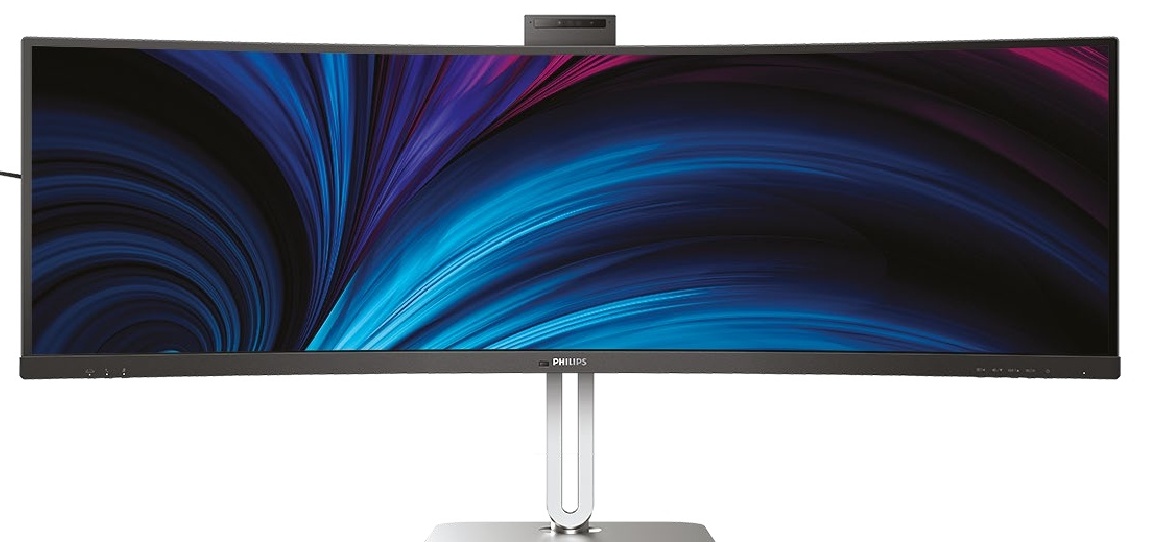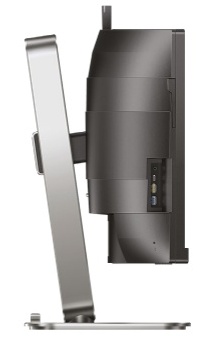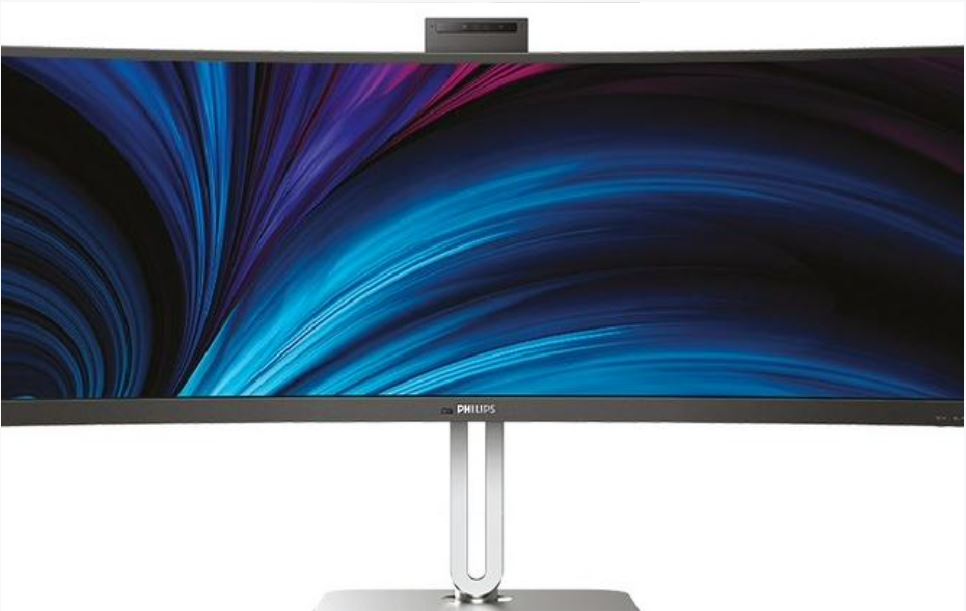Why you can trust TechRadar
This review first appeared in issue 355 of PC Pro.
It’s tempting to ignore the diagrams on the Philips 49B2U6900CH box that say, categorically, “this is a two-person job”. So tempting, in fact, that I did ignore them, and was soon struggling to attach the gigantic 49in panel to the gratifyingly sturdy metal stand. At least I had the good sense to clear my desk beforehand, as I looked like a weightlifter huffing and puffing it into place.
But it’s office workers rather than weightlifters that Philips targets here, particularly those who currently have two or three 27in monitors littering their desk. The idea is to replace such anachronisms with a single screen, allowing you to split your windows across the 5,120 x 1,440 pixels (32:9). Windows Snap does a great job of this, but I found I worked best with my windows scattered around; I could then drag the required window front and center as required. If your job involves research, you’ll love having everything in view.
It’s even possible to multitask across two different computers, with a KVM that allows you to switch between sources simply by pressing Ctrl three times. At least one of those sources will need to be connected over USB-C, and with up to 100W of power delivery (on both upstream USB-C ports) this monitor makes an ideal docking station. It even includes a 1GbE port alongside the four USB-A ports and a USB-C downstream port. Sensibly, Philips places that USB-C port, a 3.5mm jack and two USB-A ports on the left-hand side of the monitor for easy access.

You’ll also find a flip-out headphone stand here although, for once, I was pleasantly surprised by the quality of a monitor’s integrated speakers; I was happy to listen to music while working on the Philips 49B2U6900CH. Although not bass-heavy tracks, as even this pair of 5W speakers sound hollow.
Philips includes a 5MP webcam, which pops up like a periscope when you need it.
It makes sense to keep it up all the time as it can also log you into Windows using facial recognition, plus it includes a “Busylight”. So, if it knows you’re on a video call, a red strip light runs across the top and side to alert colleagues. Or you can activate this yourself using a button on the bottom left. It’s a nice idea, but I hope the next iteration is more prominent.
I also hope that Philips improves the camera. Detail capture is spot on, and the auto-framing option (albeit a tad over-eager) works well, as does the fact that it can accommodate several people in view. However, its color balance needs work, as everything has a strange, hazy blue quality to it. Hopefully this will be fixed via a software update, but in the meantime I recommend using a webcam and a separate mic, as even at maximum pickup I found the built-in option too weak.
I have no such complaints about the panel’s image quality. This is a VA panel with a minor curvature, and it’s tuned for the sRGB color space rather than DCI-P3. There’s even an sRGB preset, which produces excellent whites. Color accuracy is fine for its intended office use, with an average Delta E of 1.13. Keeping to the default mode gives you more colors than sRGB mode, covering 79% of the DCI-3 space compared to 68%, and while whites lose some whiteness it’s still a great everyday choice.

Brightness goes all the way up to 500cd/m2, which is overkill in an office and also consumes more power. At a more sensible 200cd/m2(33% in Philips’ brightness setting) it consumed 44W, while pushing it to 100% eats 71W. Philips also offers a bunch of its SmartImage options, including Eco (125cd/m2, 37W) and EasyRead, which are worth exploring.
There’s a Movie mode, too, with Philips earning DisplayHDR 400 certification for this monitor. Films look good so long as you ignore the huge expanse of black to the left and right. It’s in driving and FPS games, though, where you truly enjoy the wide expanse, and even though it has a peak 75Hz refresh rate this monitor pays extra dividends after hours.
In fact, it delivers in all key areas. Image quality is strong, it’s extremely well suited to office life (note the 150mm of height adjustment), and there are useful features galore. My only real criticism of this monitor is its price.
Tim Danton is editor-in-chief of PC Pro, the UK's biggest selling IT monthly magazine. He specialises in reviews of laptops, desktop PCs and monitors, and is also author of a book called The Computers That Made Britain.
You can contact Tim directly at editor@pcpro.co.uk.
What is a hands on review?
Hands on reviews' are a journalist's first impressions of a piece of kit based on spending some time with it. It may be just a few moments, or a few hours. The important thing is we have been able to play with it ourselves and can give you some sense of what it's like to use, even if it's only an embryonic view. For more information, see TechRadar's Reviews Guarantee.
You must confirm your public display name before commenting
Please logout and then login again, you will then be prompted to enter your display name.

